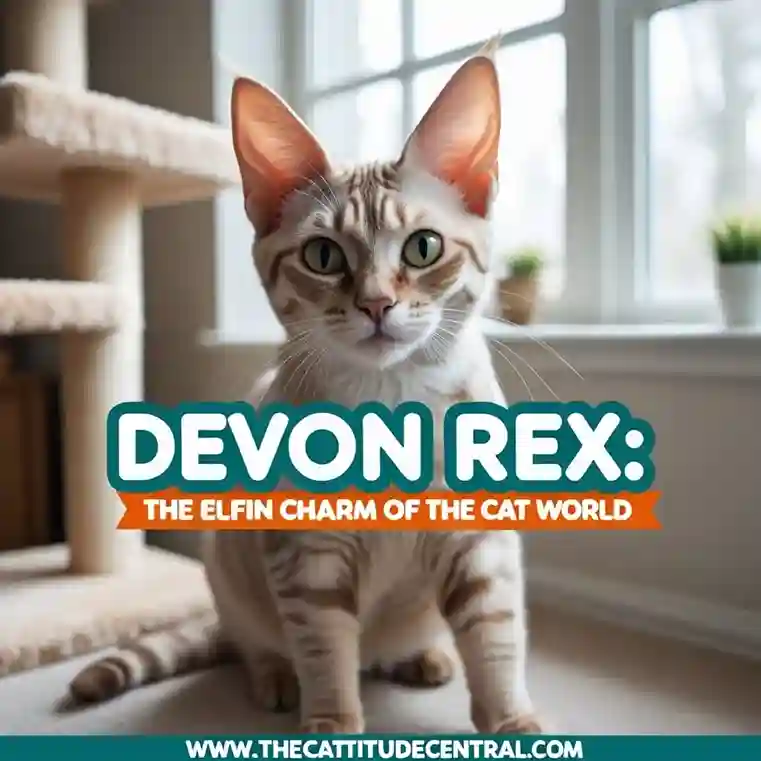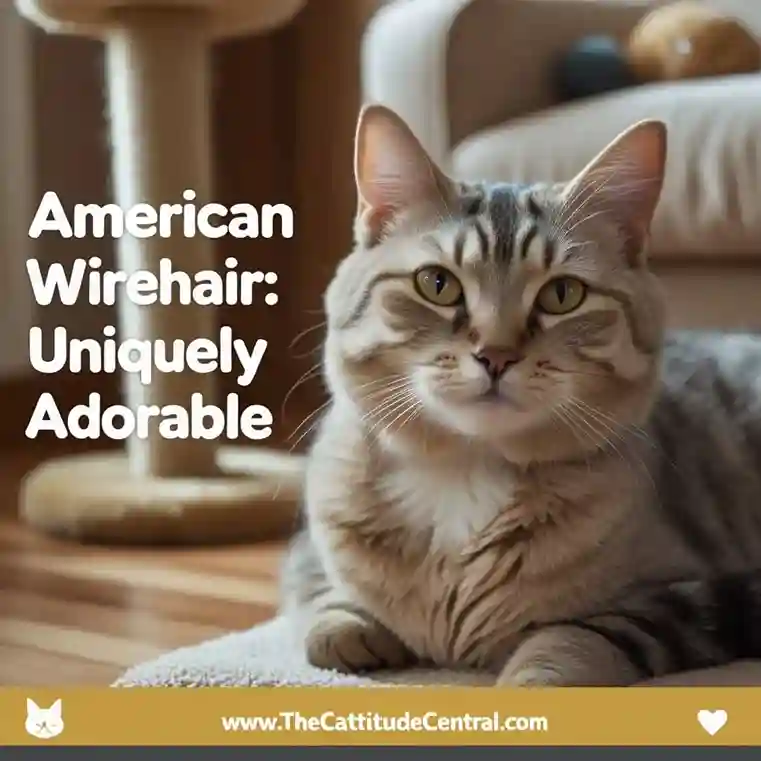Imagine a cat that combines the grace of a ballerina, the chatter of a talkative friend, and the energy of a playful puppy. That’s the Oriental Shorthair—a breed that captivates with its sleek silhouette, vibrant personality, and boundless curiosity. Originating in the 1950s and 1960s from Siamese ancestry, this breed was developed by crossing Siamese with other shorthair breeds to create a dazzling array of over 300 coat colors and patterns. Known for their dog-like loyalty and striking appearance, Oriental Shorthairs are not just pets; they’re companions who demand attention and steal hearts.
In this comprehensive guide, we’ll dive into every facet of the Oriental Shorthair, from their sculptural physique to their chatty demeanor, care needs, health considerations, and adoption tips. Whether you’re a first-time cat owner or a seasoned feline enthusiast, this post will equip you with everything you need to know about this extraordinary breed. Expect practical advice, engaging insights, and answers to common questions to help you decide if an Oriental Shorthair is your perfect match.
Physical Characteristics: A Study in Elegance
The Oriental Shorthair’s appearance is nothing short of mesmerizing, earning them the nickname “Ornamental Shorthair.” Their physical traits are a testament to their refined lineage and unique aesthetic.
Body Structure
The Oriental Shorthair boasts a slender, tubular body that’s both elegant and athletic. Their fine-boned frame is deceptively muscular, allowing for agile movements and impressive leaps. The abdomen is tightly tucked, resembling a greyhound’s sleek silhouette, while their long, slim legs and small, oval paws enhance their dainty yet powerful look. The tail, long and whip-like, tapers to a fine point and is often carried with a graceful curve, adding to their poised demeanor.
Head and Facial Features
Their head is a defining feature, forming a perfect wedge shape that creates a triangular silhouette from the nose to the tips of their large, flared ears. These ears, wide at the base and set low, give the cat an alert and expressive appearance. The almond-shaped, slanted eyes—typically vivid green, though blue or odd-eyed in pointed varieties—convey an exotic, almost mystical allure. The nose is long and straight, aligning seamlessly with the forehead, and the firm chin completes a refined profile reminiscent of their Siamese cousins.
Coat and Colors
The Oriental Shorthair’s coat is short, dense, and fine-textured, lying close to the body to accentuate their sleek form. Its glossy, satin-like finish reflects light, giving a polished, almost metallic sheen. With over 300 color and pattern combinations, they offer unmatched variety: solids (ebony, white, blue), shaded, smoke, particolor, bicolor, tabby (classic, mackerel, spotted, ticked), and pointed patterns like their Siamese relatives. Pointed varieties, such as seal or chocolate points, feature darker extremities and often blue eyes, while tortoiseshell, calico, and lynx point patterns add further diversity.
Size and Distinctive Traits
Weighing 6–12 pounds (males 8–12, females 6–8), Oriental Shorthairs are medium-sized but appear larger due to their elongated proportions. Their sculptural aesthetic, with angular lines and large ears, makes them look like living art. Unlike the Siamese, they boast a broader color palette and slightly less extreme head shapes in some lines. A related breed, the Oriental Longhair, shares their body type but sports a silky, medium-long coat.
Word Count Expansion Tip: To reach 6,000–10,000 words, this section can include detailed comparisons with other breeds (e.g., Siamese, Abyssinian), anecdotes about their appearance in cat shows, and a deeper dive into how specific coat patterns (e.g., ticked tabby) are bred. Add visuals or descriptions of notable Oriental Shorthairs in media or history.
Personality and Temperament: A Vibrant Companion
The Oriental Shorthair’s personality is as striking as their appearance, making them a dynamic addition to any home.
Social and Affectionate
These cats are the epitome of “people-oriented.” They form deep bonds, often choosing a favorite person to shadow relentlessly, earning the nickname “velcro cats.” Whether curling up in your lap or perching on your shoulder, they crave physical closeness and may even sleep under the covers with you. Their loyalty is dog-like, following you from room to room and demanding inclusion in daily activities.
Vocal and Expressive
Inheriting the Siamese’s chatty nature, Oriental Shorthairs are vocal virtuosos. Their repertoire ranges from soft chirps to loud, insistent meows, used to express everything from hunger to affection. They “converse” with owners, responding to human speech as if holding a dialogue. While charming, their vocalizations can be demanding, especially if they feel ignored.
Intelligent and Curious
With a sharp intellect, these cats excel at problem-solving—think opening cabinets or mastering puzzle toys. Their curiosity drives them to explore every nook, from high shelves to hidden corners, often leading to playful mischief. They’re highly trainable, learning tricks like fetch or leash-walking with ease, making them ideal for owners who enjoy engaging their pets mentally.
Playful and Energetic
Oriental Shorthairs are perpetual kittens, retaining their playful energy into adulthood. They love interactive games—chasing laser pointers, pouncing on feather wands, or fetching balls—and their athletic build enables spectacular leaps. Daily play is non-negotiable to keep them content and prevent boredom-driven antics.
Emotionally Sensitive
These cats are attuned to their owners’ emotions, offering comfort during tough times or mirroring stress in chaotic settings. They’re sensitive to changes like new routines or moves, requiring extra reassurance to avoid behaviors like excessive meowing or litter box issues.
Sociability and Challenges
They get along with other pets and gentle children if socialized early, though they may compete for attention. Their demanding nature and need for engagement can overwhelm owners seeking low-maintenance pets. Without stimulation, they may become vocal or destructive, making them best suited for active, attentive households.
Care Requirements: Keeping Your Oriental Shorthair Thriving
Caring for an Oriental Shorthair involves meeting their physical, mental, and emotional needs to ensure a happy, healthy life.
Grooming
Their short, fine coat requires minimal upkeep—just a weekly brushing with a soft brush or grooming glove to remove loose hair and maintain their glossy sheen. Occasional baths (every 2–3 months) with cat-safe shampoo enhance their coat’s luster, especially for show cats. Nail trimming every 2–3 weeks prevents scratching, and scratching posts are a must. Monthly ear cleaning with a vet-approved solution keeps their large ears debris-free. Dental care is critical due to their predisposition to gingivitis; daily brushing with pet-safe toothpaste and annual cleanings are essential.
Exercise
High-energy Oriental Shorthairs need 30–60 minutes of daily play to stay physically and mentally satisfied. Interactive toys like feather wands or laser pointers mimic hunting, while puzzle feeders engage their intellect. Vertical spaces—cat trees, shelves, or window perches—cater to their love of climbing. Leash training offers safe outdoor enrichment, and toy rotation keeps their curious minds engaged.
Diet and Nutrition
A high-protein, low-carb diet supports their active metabolism. Feed measured meals (1/4–1/2 cup dry food daily, split into 2–3 meals) to prevent obesity, as they’re prone to weight gain if overfed. Wet food aids hydration and dental health. Provide fresh water via a pet fountain, and avoid human foods like onions or chocolate. Monthly weight checks ensure they stay within the ideal 6–12-pound range.
Health Maintenance
Annual vet checkups (biannual for seniors) monitor for breed-specific issues like dental disease, hypertrophic cardiomyopathy (HCM), asthma, amyloidosis, and progressive retinal atrophy (PRA). Core vaccinations (FVRCP, rabies) and parasite control are essential. Spay/neuter by 6 months reduces health and behavioral risks. Watch for symptoms like wheezing (asthma) or lethargy (amyloidosis) and seek prompt care.
Environmental Enrichment
A stimulating environment with toys, scratching posts, and vertical spaces prevents boredom. Daily owner interaction strengthens bonds, while multiple litter boxes (one per cat plus one) in quiet spots maintain their fastidious nature. Minimize respiratory irritants like smoke to reduce asthma risk. If left alone, provide puzzle toys or a companion pet to curb loneliness.
Health and Lifespan: Ensuring a Long, Vibrant Life
Oriental Shorthairs typically live 12–15 years with proper care, but their Siamese heritage predisposes them to specific health concerns.
Common Health Issues
- Dental Disease: Their narrow jaw increases gingivitis risk. Daily brushing and annual cleanings are vital.
- Respiratory Issues: Asthma and upper respiratory infections cause wheezing or coughing. Reduce triggers (dust, smoke) and use vet-prescribed inhalers or corticosteroids.
- Hypertrophic Cardiomyopathy (HCM): This hereditary heart condition requires regular echocardiograms, especially for breeding cats.
- Amyloidosis: A rare condition where proteins deposit in organs, causing weight loss or lethargy. Supportive care is the only option.
- Progressive Retinal Atrophy (PRA): Genetic vision loss; annual eye exams aid early detection.
- Obesity: Monitor diet and exercise to prevent diabetes or joint issues.
Preventive Care
Annual checkups, vaccinations, and parasite control are non-negotiable. Genetic testing for HCM and PRA is crucial for breeding cats. A stress-free environment and consistent routine minimize health risks.
Adoption and Breeding: Finding Your Oriental Shorthair
Finding a Reputable Breeder
Choose breeders registered with CFA or TICA, who provide health clearances for HCM and PRA. Kittens should be raised in-home, socialized, and not rehomed before 12–16 weeks. Request health guarantees, vaccination records, and a contract. Visit the cattery to ensure clean, ethical conditions. Prices range from $500–$1,500, depending on lineage and quality.
Adoption Options
Breed-specific rescues (e.g., Siamese Cat Rescue Center) or shelters offer Oriental Shorthairs for $50–$200, often including spay/neuter and vaccinations. Check Petfinder or local shelters. Adoption involves applications and home checks to ensure a good fit.
Costs and Considerations
Initial costs include kitten price or adoption fee, plus supplies ($100–$300). Ongoing expenses (food, vet care, litter) run $500–$1,000 annually. Their high-energy, vocal nature suits active owners but may challenge those with limited time.
Breeding Ethics
Breeding requires expertise, health testing, and adherence to CFA/TICA standards. Limit litters to avoid overbreeding, and spay/neuter pet-quality cats to prevent unplanned litters.
FAQs: Your Oriental Shorthair Questions Answered
Q: Are Oriental Shorthairs good for first-time cat owners?
A: They can be, but their high energy and vocal nature require committed, attentive owners. First-timers should be prepared for daily interaction and enrichment.
Q: How do I manage their vocalization?
A: Engage them with play and attention to reduce attention-seeking meows. Redirect excessive vocalizing with toys or training, and ensure their needs (food, litter) are met.
Q: What’s the difference between an Oriental Shorthair and a Siamese?
A: Oriental Shorthairs have a wider range of coat colors/patterns and a slightly less extreme head shape, but share the Siamese’s vocal, social traits.
Q: How can I keep my Oriental Shorthair healthy?
A: Regular vet checkups, dental care, a balanced diet, and an enriched environment are key. Monitor for breed-specific issues like HCM or asthma.
Q: Where can I adopt an Oriental Shorthair?
A: Check breed-specific rescues, local shelters, or platforms like Petfinder. Reputable breeders are listed on CFA or TICA websites.
Final Thoughts – Is the Oriental Shorthair Your Perfect Feline Match?
The Oriental Shorthair isn’t just a cat; it’s a whirlwind of elegance, energy, and personality that transforms your home into a stage for connection and adventure. With their sleek, sculptural bodies, kaleidoscope of coat colors, and a voice that demands to be heard, these felines are a captivating blend of art and affection. But beyond their striking appearance lies a heart that craves companionship, a mind that thrives on stimulation, and a spirit that refuses to go unnoticed.
As we wrap up this deep dive into the world of the Oriental Shorthair, let’s reflect on what makes this breed so special—and whether they’re the right companion for you in 2025 and beyond.
Sources
- Cat Fanciers’ Association (CFA). (2025). Oriental Shorthair Breed Standard.
- The International Cat Association (TICA). (2025). Oriental Breed Information.
- Cornell Feline Health Center. (2024). Feline Health Topics: Hypertrophic Cardiomyopathy.
- Siamese Cat Rescue Center. (2025). Breed Information and Adoption Guidelines.
- Petfinder. (2025). Adoption Resources for Purebred Cats.



